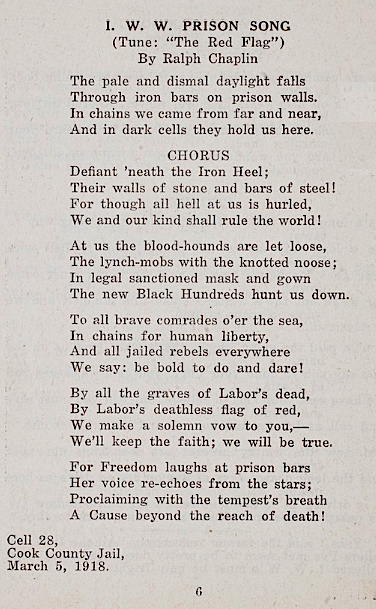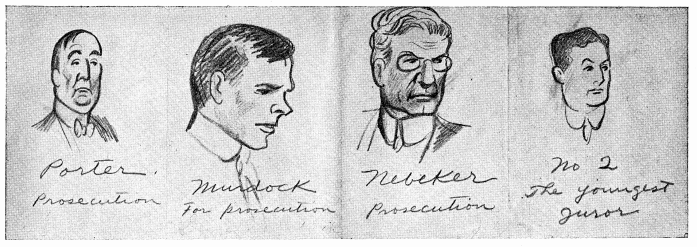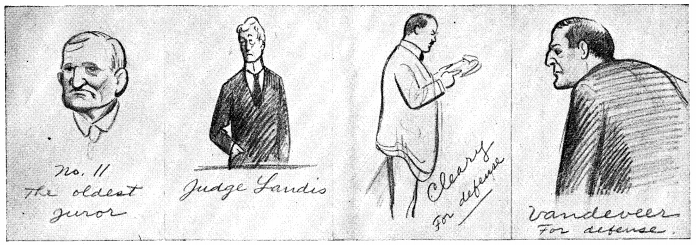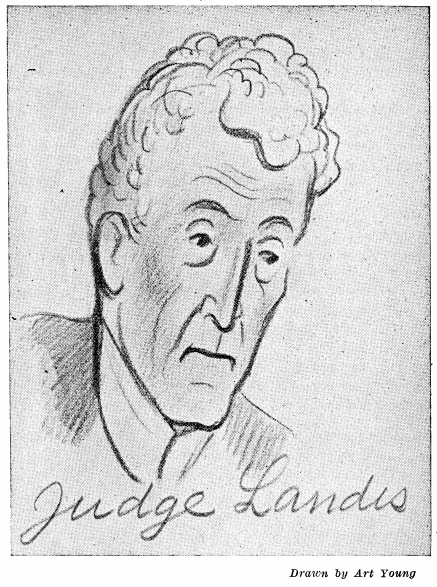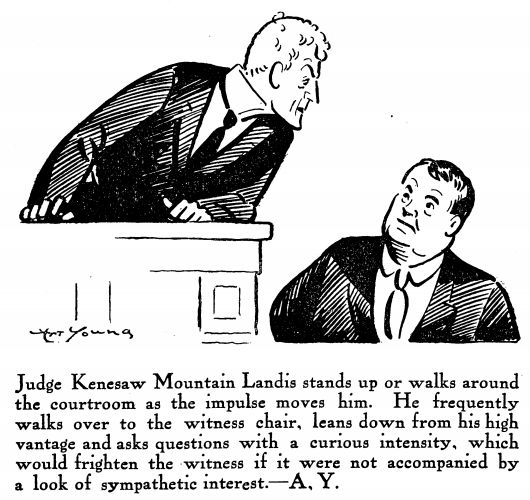Remember, this is the only
American working-class movement which sings.
Tremble then at the I. W. W.,
for a singing movement is not to be beaten.
-Jack Reed
~~~~~~~~~~~~~~~~~~~~~~~~~~~~~~~~~~~~~~~~~~~~~
Hellraisers Journal, Monday September 2, 1918
Chicago, Illinois – “Small on the huge bench sits a wasted man…”
From The Liberator of September 1918:
Part I of John Reed’s coverage of Chicago I. W. W. trial with drawings by Art Young-
The Social Revolution In Court
By Art Young And John Reed
—–IN the opening words of his statement why sentence of death should not be pronounced upon him, August Spies, one of the Chicago martyrs of 1887, quoted the speech of a Venetian doge, uttered six centuries ago-
“I stand here as the representative of one class, and speak to you, the representatives of another class. My defense is your accusation; the cause of my alleged crime, your history.”
The Federal court-room in Chicago, where Judge Landis sits in judgment on the Industrial Workers of the World, is an imposing great place, all marble-and-bronze and mellow dark wood-work. Its windows open upon the heights of towering office-buildings, which dominate that court-room as money-power dominates our civilization.
Over one window is a mural painting of King John and the Barons at Runnymede, and a quotation from the Great Charter:
“No freeman shall be taken or imprisoned or be disseized of his freehold or liberties or free customs, or be outlawed or exiled or any otherwise damaged but by lawful judgment of his peers or by the law of the land-
“To no one will we sell, to no one will we deny or delay right or justice….”
Opposite, above the door, is printed in letters of gold:
“These words the Lord spake unto all your assembly in the mount out of the midst of the fire, of the cloud, and of the thick darkness, with a great voice; and he added no more. And he wrote them in two tables of stone, and delivered them unto me….”-Deut. V. 22.
Heroic priests of Israel veil their faces, while Moses elevates the Tables of the Law against a background of clouds and flame.
—–Small on the huge bench sits a wasted man with untidy white hair, an emaciated face in which two burning eyes are set like jewels, parchment skin split by a crack for a mouth; the face of Andrew Jackson three years dead. This is Judge Kenesaw Mountain Landis, named for a battle-a fighter and a sport, according to his lights, and as just as he knows how to be. It was he who fined the Standard Oil Company thirty-nine million dollars. (N0, none of it was paid.)
Upon this man has devolved the historic role of trying the Social Revolution. He is doing it like a gentleman. Not that he admits the existence of a Social Revolution. The other day he ruled out of evidence the Report of the Committee on Industrial Relations, which the defense was trying to introduce in order to show the background of the I. W. W.
“As irrelevant as the Holy Bible,” he said. At least that shows a sense of irony.
In many ways a most unusual trial. When the judge enters the court-room after recess no one rises-he himself has abolished the pompous formality. He sits without robes, in an ordinary business suit, and often leaves the bench to come down and perch on the step of the jury box. By his personal order, spittoons are placed beside the prisoners’ seats, so they can while away the long day with a chaw; and as for the prisoners themselves, they are permitted to take off their coats, move around, read newspapers.
—–It takes some human understanding for a Judge to fly in the face of judicial ritual as much as that….
As for the prisoners, I doubt if ever in history there has been a sight just like them. One hundred and one men-lumber-jacks, harvest-hands, miners, editors; one hundred and one who believe that the wealth of the world belongs to him who creates it, and that the workers of the world shall take their own. I have before me the chart of their common-wealth-their industrial democracy-One Big Union.
One Big Union-that is their crime. That is why the I. VV. W. is on trial. In the end just such an idea shall sap and crumble down capitalist society. If there were a way to kill these men, capitalist society would cheerfully do it; as it killed Frank Little, for example-and before him, Joe Hill…. So the outcry of the jackal press, “German agents! Treason!”-that the I. W. W. may be lynched on a grand scale.
One hundred and one strong men. Most of our American social revolutionists are in the sedentary trades-garment-workers, textile-workers, printers. At least, so it seems to us, in the great cities. Your miners, your steel and iron workers, building-trades, railroad workers-all these belong to the A. F. of L., which believes in the capitalist system as strongly as J. P. Morgan does. But these Hundred and One are out-door men, hard-rock blasters, tree-fellers, wheat-binders, longshoremen, the boys who do the strong work of the world. They are scarred all over with the wounds of industry-and the wounds of society’s hatred. They aren’t afraid of anything. They are the kind of men the capitalist points to as he drives past some great building they are putting up, or some huge bridge they are throwing over a river:
“There,” he says, “that’s the kind of working-men we want in this country. Men that know their job, and work at it, instead of going around talking bosh about the class struggle.”
They know their job, and work at it. But strangely enough they believe in the Social Revolution too.
Hear this once more, their trumpet-call; the famous Preamble of the I. W. W.:
“The working class and the employing class have nothing in common. There can be no peace so long as hunger and want are found among millions of working-people, and the few who make up the employing class have all the good things of life.
“Between these two classes a struggle must go on until the workers of the world organize as a class, take possession of the earth and the machinery of production, and abolish the wage system.”
[Part I of IV, to be continued.]
~~~~~~~~~~~~~~~~~~~~~~
SOURCE & IMAGES
The Liberator
(New York, New York)
https://www.marxists.org/history/usa/culture/pubs/liberator/
-September 1918
John Reed on Chicago IWW Trial
-with Drawings by Art Young, page 20
https://www.marxists.org/history/usa/culture/pubs/liberator/1918/07/v1n07-sep-1918-liberator.pdf
See also:
The Truth about the IWW
Facts in Relation to the Trial at Chicago
National Civil Liberties Bureau, 1918
https://books.google.com/books?id=G1I2AQAAMAAJ
Evidence and cross-examination of J.T. (Red) Doran
in the case of the U.S.A. vs. Wm. D. Haywood et al.
IWW GDC, 1918
https://catalog.hathitrust.org/Record/100663081
Haywood at Chicago IWW Trial
Evidence and cross examination of William D. Haywood
in the case of the U.S.A. vs. Wm. D. Haywood, et al.
Chicago, General Defense Committee, 1918
https://catalog.hathitrust.org/Record/003309919
The I.W.W. Trial
Story of the Greatest Trial in Labor’s History
by one of the Defendants
-by Harrison George
—-with introduction by A. S. Embree.
IWW, Chicago, 1919
https://catalog.hathitrust.org/Record/100663067
~~~~~~~~~~~~~~~~~~~~~~~~~~~~~~~~~~~~~~~~~~~~~
Prison Song by Ralph Chaplin
https://digital.wolfsonian.org/WOLF045327/00001/11j
